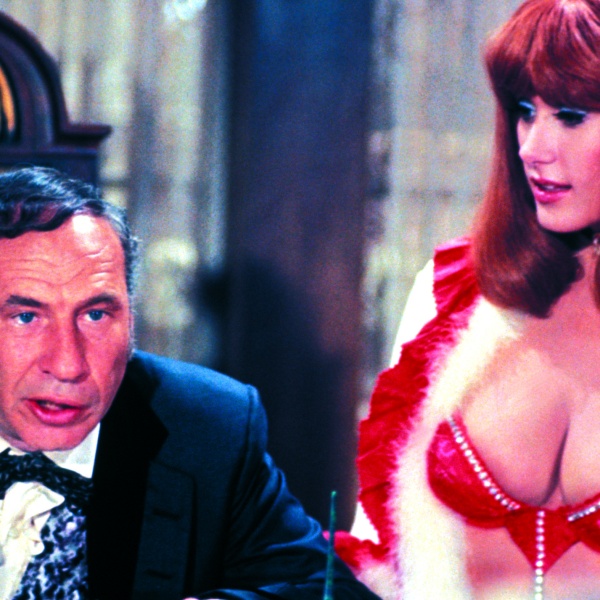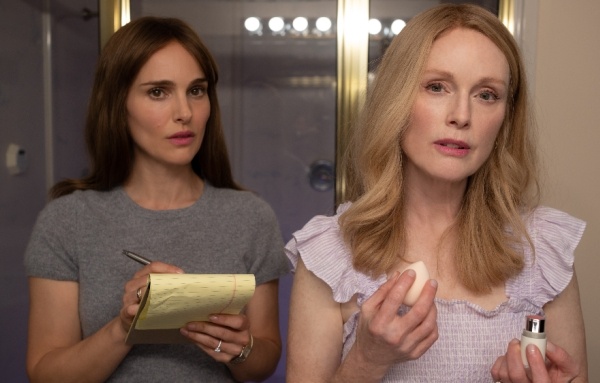The Oscar shortlists were released December 21 ahead of the nominations on January 23, 2024, and here we’re covering the crafts of makeup and hairstyling, original score, sound, and visual effects. (Best Original Song is covered in 2024 Oscars shortlists for 10 categories, which includes an additional listing for “American Symphony,” “Barbie,” “Killers of the Flower Moon, “Spider-Man: Across the Universe,” and “The Color Purple.”)
The big winners — appearing on three lists — were Martin Scorsese’s “Killers of the Flower Moon” (makeup and hairstyling, score, and sound), Christopher Nolan’s “Oppenheimer” (makeup and hairstyling, score, and sound), Ridley Scott’s “Napoleon” (makeup and hairstyling, sound, and visual effects), Yorgos Lanthimos’ “Poor Things,” (makeup and hairstyling, score, and visual effects), and J.A. Bayona’s “Society of the Snow” (score, sound, and visual effects).
In fact, “Napoleon,” “Poor Things,” and “Society of the Snow” have the potential to be late-season craft juggernauts in competition with “Oppenheimer,” “Killers of the Flower Moon,” and Greta Gerwig’s billion-dollar blockbuster “Barbie,” which scored on two lists (original score and sound).
Also making two lists were Michael Mann’s “Ferrari” (makeup and hairstyling and sound), James Mangold’s “Indiana Jones and the Dial of Destiny” (score and visual effects), Bradley Cooper’s “Maestro” (makeup and hairstyling and sound), Christopher McQuarrie’s “Mission: Impossible — Dead Reckoning Part One” (sound and visual effects), Phil Lord and Christopher Miller’s animated “Spider-Man: Across the Spider-Verse” (score and visual effects), Gareth Edwards’ “The Creator” (sound and visual effects), and Jonathan Glazer’s “The Zone of Interest” (score and sound).
The rest of the pack included Cord Jefferson’s “American Fiction” (score), Matthew Heineman’s documentary “American Symphony” about musician-composer Jon Batiste (score), Ari Aster’s “Beau Is Afraid” (makeup and hairstyling), Pixar’s “Elemental” (score), Takashi Yamazaki’s “Godzilla Minus One” (visual effects), Guy Nattiv’s “Golda” (makeup and hairstyling), James Gunn’s “Guardians of the Galaxy Vol. 3” (visual effects), Zack Snyder’s “Rebel Moon – Part One: A Child of Fire” (visual effects), Emerald Fennel’s “Saltburn” (score), Hayao Miyazaki’s “The Boy and the Heron” (score), Blitz Bazawule’s The Color Purple” (score), Alexander Payne’s “The Holdovers” (score), David Fincher’s “The Killer” (sound), and André Øvredal’s “The Last Voyage of the Demeter” (makeup and hair).
The biggest shutouts were Paul King’s “Wonka,” the musical origin story starring Timothée Chalamet as Roald Dahl’s beloved chocolatier, Sofia Coppola’s “Priscilla,” and Nyad,” starring Annette Bening as swimmer Diana Nyad, directed by Elizabeth Chai Vasarhelyi and Jimmy Chin. “Wonka” was looking to get in, especially for Hugh Grant’s Oompa Loompa makeup and hair and Framestore’s visual effects. “Priscilla” was in contention for makeup and hair, and “Nyad” was up for Alexandre Desplat’s score and Scanline’s visual effects.
Makeup and Hairstyling
Transformations continue to drive makeup and hairstyling, with “Maestro” leading the field. Oscar-winning prosthetic makeup guru Kazu Hiro (“Bombshell” and “Darkest Hour”) looks for his third win for transforming Cooper as legendary conductor-composer Leonard Bernstein, spanning five decades and involving five stages (in color and black-and-white). This was in collaboration with Oscar-nominated makeup designer Sian Grigg and Oscar-nominated hair designer Kay Georgiou.
“Golda” saw Helen Mirren become Israeli Prime Minister Golda Meir (courtesy of makeup and hair designer Helen Hartley-Thomas and her team). However, the two biggest surprises were “Beau Is Afraid” (makeup designer Colin Penman and hair designer Félix Larivière) and “The Last Voyage of the Demeter” (creature specialist Javier Botet). The former offers a range of looks and ages for Joaquin Phoenix’s titular schizophrenic, while “Demeter’s” later impressively created the batlike Dracula ghoul. The fact that we get a double dose of Phoenix with “Napoleon” (makeup designer Jana Carboni and hair designer Francesco Pegoretti) is all the more exciting. Meanwhile, the snubs here were “Barbie” (which embodied the plastic essence of the Mattel dolls), “Guardians of the Galaxy Vol. 3” (which offered a record 22,500 prosthetics for its ensemble cast), and “Exorcist: Believer” (which delivered a double dose of naturalistic demonic possession).
Original Score
The biggest surprise for score was “American Symphony,” the Netflix documentary about Jon Batiste composing a symphony about life partner/author Suleika Jaouad coping with her cancer relapse. A mild surprise was the inclusion of Kris Bowers’ score for his adaptation of “The Color Purple” musical (tapping jazz, soul, and blues) over his score for Ava DuVernay’s “Origin,” which took inspiration from music written during the Holocaust and Dalit music for this biographical/fictional examination of the roots of hate.
But the inclusion of three animated features — “Across the Spider-Verse” (Daniel Pemberton), “Elemental” (Thomas Newman), and “The Boy and the Heron” (a first for Joe Hisaishi) — is a testament to the important musical contributions of all three scores.
“Black Panther” Oscar winner Ludwig Göransson is the frontrunner for “Oppenheimer,” in which he wrapped a crucial violin theme around Cillian Murphy’s nuanced performance as the conflicted “father of the atomic bomb.” However, Oscar winner Michael Giacchino (“Up”) delivers his most spiritual score with “Society of the Snow,” while Laura Karpman shines with her jazzy “American Fiction” score. Yet the late Robbie Robertson is the sentimental favorite to win the Oscar for his evocative Native American-influenced score for “Killers of the Flower Moon.”
Sound
The pleasant surprise for sound was the inclusion of “The Killer,” with sound design guru Ren Klyce taking us inside the mind of Michael Fassbender’s titular character with an experimental soundscape that included lots of voiceover, a personal playlist of The Smiths, and total 360 immersion that was like attaching a mic to the camera. A bigger surprise, though, was “The Creator,” with its unsettling action-adventure infusion of AI robots, explosions, and Southeast Asia atmospherics, led by supervising sound editors Erik Aadahl and Ethan Van Der Ryn.
However, the field is dominated by the explosive frontrunning “Oppenheimer” (led by Oscar-winning sound designer Richard King, Oscar-winning music and sound effects mixer Kevin O’Connell, and dialogue mixer Gary Rizzo); “Maestro,” which takes classical music to a new level of Atmos immersion (led by King, production sound mixer Steve Morrow, re-recording mixers Tom Ozanich and Dean Zupancic, and music editor Jason Ruder); and “The Zone of Interest,” a visceral horror movie soundscape from sound design genius Johnnie Burn and mixer Tarn Willers, which plays in counterpoint to the visual banality of evil portrayed in this Holocaust drama.
Visual Effects
After the shocking omission of “Oppenheimer” from the long list, the only visual effects surprise was the inclusion of the acclaimed “Godzilla Minus One” for its CG animation of the legendary kaiju. The fact that “Across the Spider-Verse” made the shortlist was a further milestone for CG animation in a category that has not been very accepting of the technique. Otherwise, the category is well represented by Marvel superheroes (“Guardians of the Galaxy Vol. 3”), more sci-fi (“The Creator,” “Rebel Moon – Part One: A Child of Fire”), action-adventure (“Indiana Jones and the Dial of Destiny,” “Mission: Impossible – Dead Reckoning Part One”), fantasy (“Poor Things”), and historical spectacle (“Napoleon,” “Society of the Snow” ).
“The Creator” is the favorite, however, for its impressive paradigm-shifting methodology. Edwards made an $80 million indie look like $200 million by shooting the entire film first in 80 locations in Southeast Asia with the lightweight Sony FX3 pro-use camera, and then having ILM design and placing the naturalistic VFX in post over the actors playing robots and as set extension.



